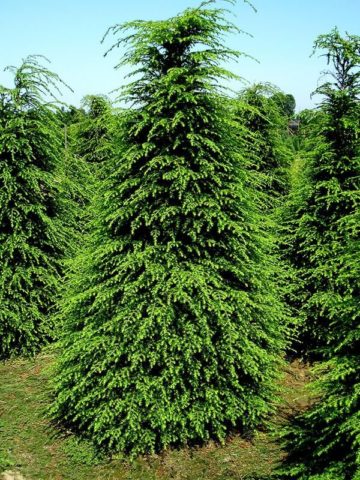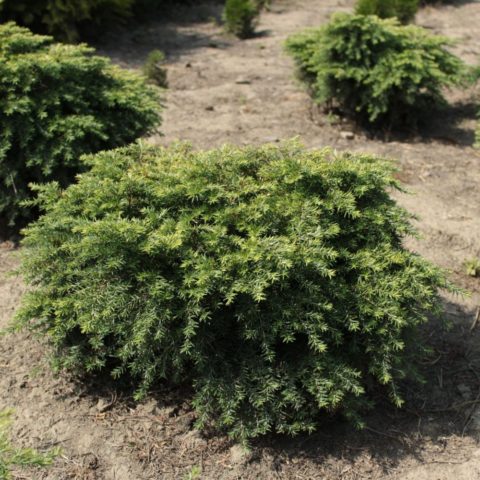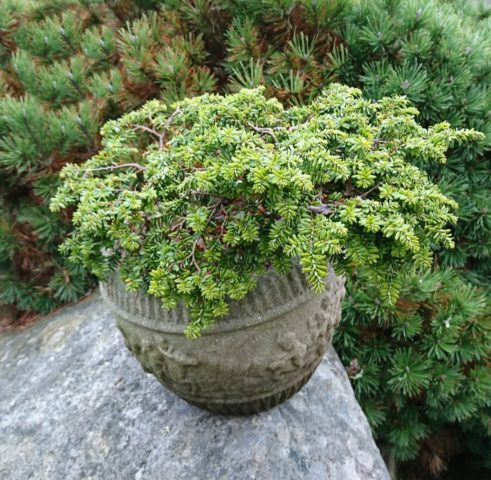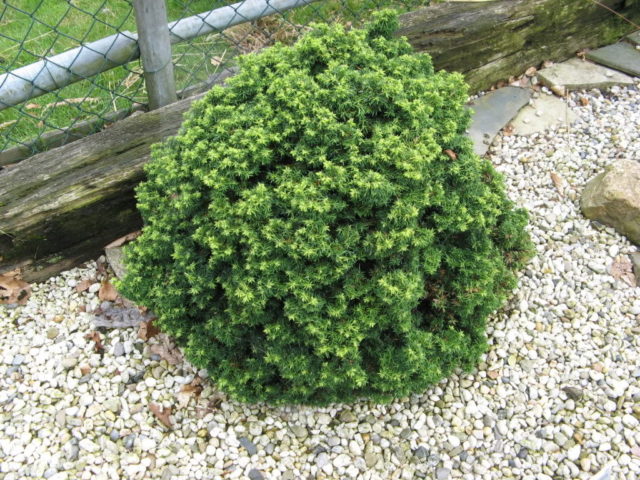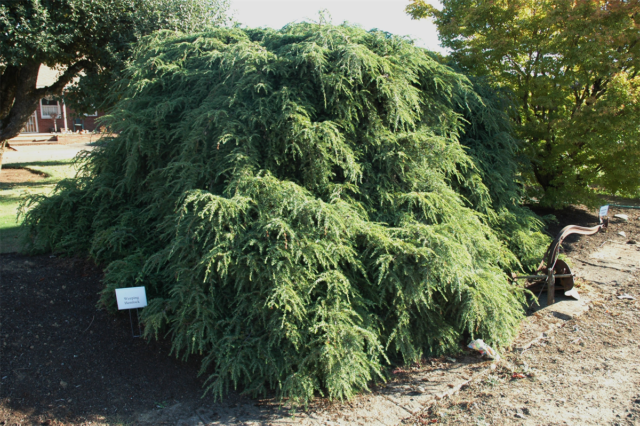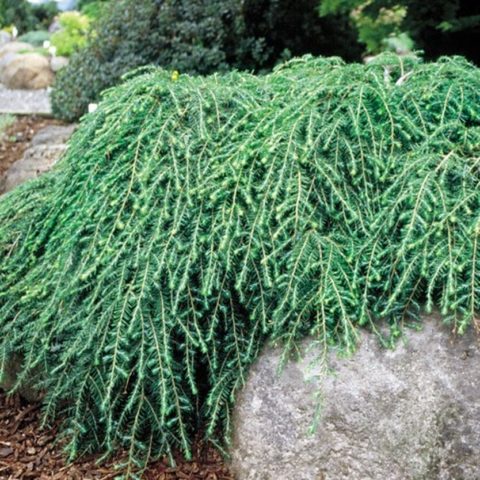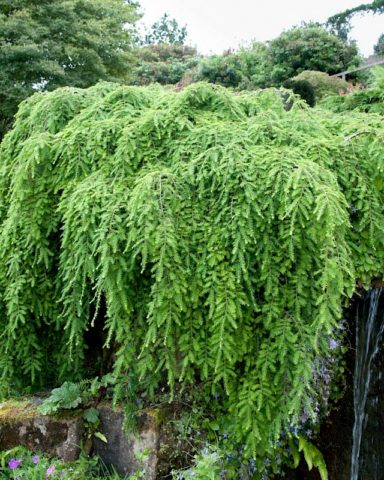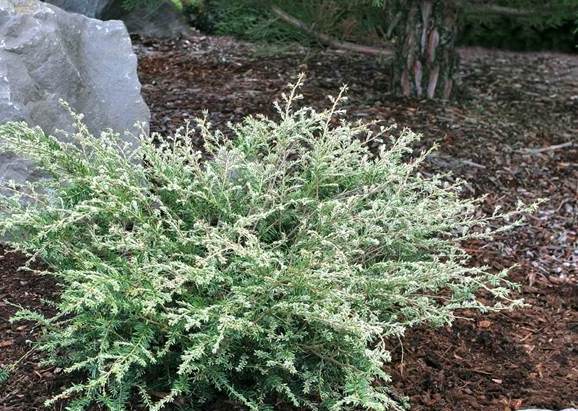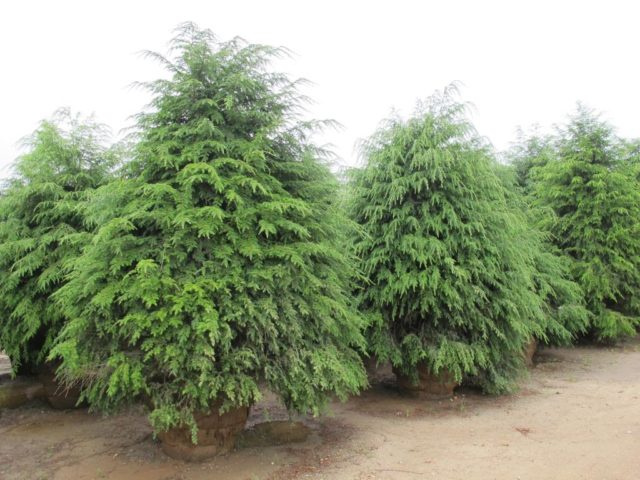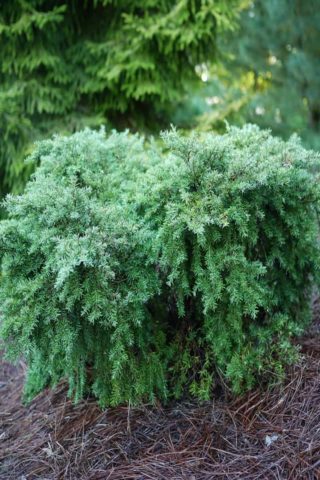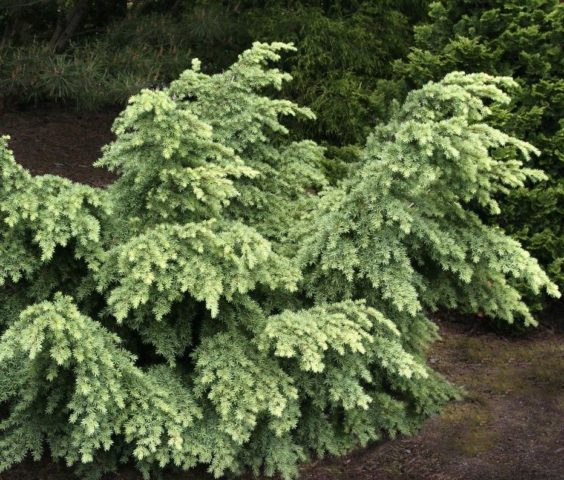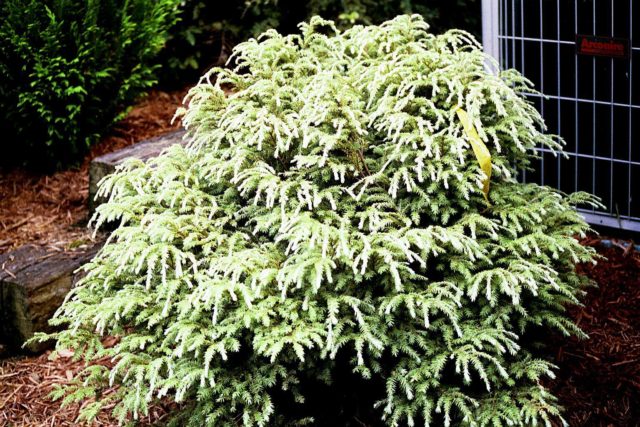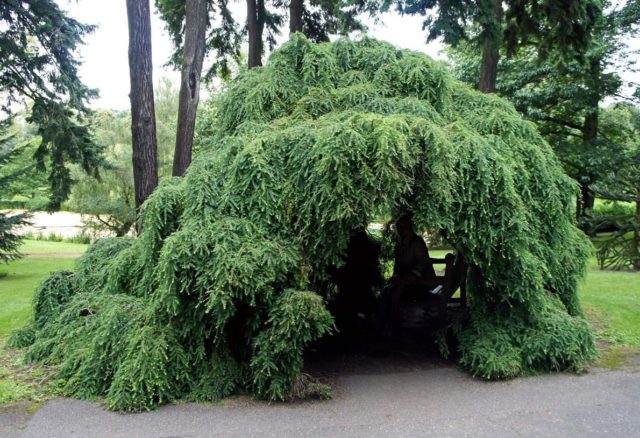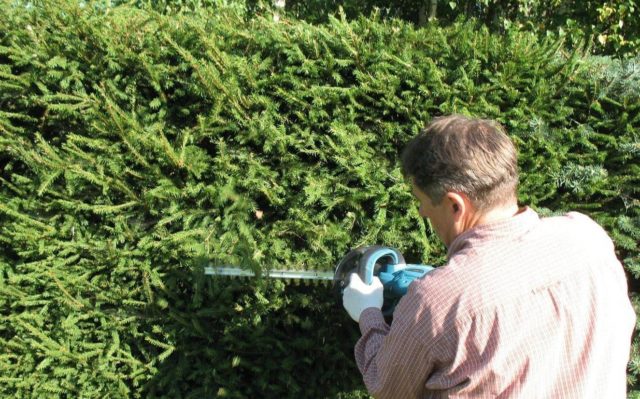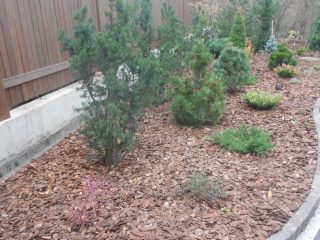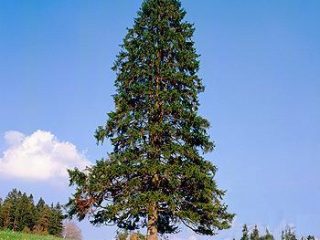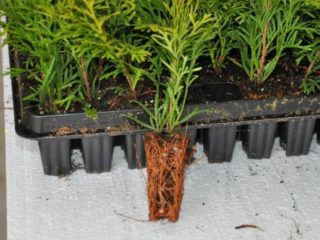Content
Canadian hemlock is a perennial tree from the Pine family. Coniferous wood is used for the production of furniture, bark and needles - in the pharmaceutical and perfumery industries. An evergreen tree native to Canada, widespread in America, especially in its northern part. The Canadian hemlock and its varieties are grown as a decorative element for landscape decoration.
What is "hemlock" and what does it look like
The genus Tsuga includes more than 20 species of conifers. But only the Canadian hemlock, due to its winter hardiness, is optimally suited for the temperate climate of Russia, therefore its various forms are popular with designers. The tree got its specific name from the distribution area, the generic name came from a species growing in Japan.
On the territory of the Russian Federation, there are no seedlings in mass sale, you will not see decorative forms in parks or squares. Canadian hemlock is a brand of popular landscape designers in Moscow, Moscow region, St. Petersburg. The culture can be found in the botanical gardens of Tver and Voronezh universities, in the arboretum of Sochi.
Description of the classic Canadian hemlock (pictured):
- A tree with a regular conical, stepped crown, spreading. The branches grow horizontally, the tops are lowered. Height is about 20-23 m. The trunk is upright, tapering towards the crown, the diameter of the lower part is 70-110 cm.
- The bark of the skeletal branches and trunk of the young ephedra is dark brown with a burgundy tint, the structure is scaly. With age, it becomes stiff, thickened, with longitudinal deep grooves.
- The branches are short, the lower ones are formed not high above the ground. Hemlock's shoots are thin, drooping.
- The needles are small, flat, with a rounded top, dark green, on the lower part there are 2 longitudinal light lines. The needles are densely located on the shoots.
- The culture is monoecious, forms female light green and male yellow small rounded strobilae.
- Cones are oval, oblong, 2.5 cm long, formed at the tops of the shoots. The color is light brown with a gray tint. Ripen during the year, crumble the next season.
- Seeds are small, oval, with lionfish.
The first male strobila appear after 20 years of vegetation. The tree is entering reproductive age. The seeds ripen by October and fly away. They can germinate in the spring or remain dormant until the next season.
How quickly the Canadian hemlock grows
This species grows very slowly, especially in the first decade. By the age of 15-20, the height of the Canadian hemlock does not exceed 8-10 m. In the future, the annual growth slightly increases, but depends on the growing conditions. The tree is one of the longest-livers in the world of flora, its biological cycle lasts more than 500 years.
Varieties of Canadian hemlock
The Canadian hemlock is the only representative of the genus with a large number of cultivars.The decorative natural form of the tree with soft fluffy needles and drooping branches formed the basis for dwarf varieties, medium-sized trees with a weeping crown and creeping varieties. Canadian hemlock has more than 60 varieties, below is a general overview of the most popular cultivars in Europe and Russia.
Jeddeloh
A miniature plant that forms a very short stem, therefore visually the variety looks like a shrub. The shape is rounded, the crown below the last branches, forms a depression in the form of a wide funnel, reminiscent of a bird's nest.
The height and width of the Canadian hemlock variety are directly proportional, the parameters of an adult tree are 0.5 m. The needles are dark green, dense, the tops are light olive. The cultivar grows very slowly, calmly tolerates the shade. Reacts poorly to low air humidity.
Jervis
Rounded, without a clear shape, very compact tree. Jervis belongs to dwarf varieties, the maximum height of an adult seedling does not exceed 0.3 m, the crown diameter is 2 times larger.
The needles are soft, densely growing, dark green. Shoots of the current season are bright green, numerous. Cultivar cones form a little, and then only after 15 years of vegetation, they are conical, brown, up to 2.5 cm long.
Stockman Dwarf
The variety is undersized - 50-100 cm, creeping, branched bush, with numerous small brown cones.
The needles are short, flat, rather wide, with rounded tops, densely growing. The dwarf hemlock is suitable for growing on the site and in volumetric flower slides. Stockman Dwarf is characterized by high shade tolerance and frost resistance. Reacts poorly to transplant.
Minuta
A spherical dwarf tree (20x20 cm) on a short trunk, the lower branches lie on the surface of the ground.
The Canadian hemlock Minute forms a compact dense crown of a regular spherical shape. The annual growth is insignificant (within 4 mm). The needles are glossy, saturated green, the shoots are one tone lighter. Frost resistance is high up to -30 0C. Use the culture for planting rockeries.
Nana
A dwarf variety of the Canadian hemlock with horizontally growing branches and drooping tops. It grows up to 1 m, its width is 2 times greater.
The cultivar is ideal for creating a hedge. The crown is dense, dense with numerous shiny needles of bright green color. Cones are small, spindle-shaped, dark brown, formed in small quantities. The variety is winter-hardy, shade-tolerant, low drought resistance.
Hussii
One of the popular semi-dwarf cultivars. Determining the clear boundaries of the crown is difficult.
The tree is dense, branched, the lower circle of branches may be shorter than the upper ones, the tree is closer to a rounded shape. The maximum size is 2.5 m. The increase is insignificant, by the age of 8 the variety barely reaches 90 cm, the width at any age is 1/2 of the height. The needles are soft, dense, dark, contrasting with bright young shoots. The plant does not lose its decorative effect in the shade, it is highly winter-hardy.
Pendula
Canadian hemlock Pendula weeping form, includes several more subspecies, different in size and color of needles.
This is a very beautiful decorative tree with a dense drooping crown and the absence of skeletal branches, thin graceful shoots. The plant is often used as a scion for the stem of taller conifers. As an independent tree, the Canadian hemlock Pendula can reach 1.5 m. It is a very dense tree with small needles of green color with a delicate blue tint. The plant prefers partial shade, has high frost resistance.
Cole
Kole's cultivar is known under different names: Cole's Prostrate, Cole's Prostrate, Cole. The Canadian Hemlock Coles Prostrate belongs to the elite variety of the weeping form.
A unique ground cover plant grows up to 0.8 m in height, branches extend up to 1.5 m. The needles are narrow, elongated, dense. The peak of decorativeness of the Canadian hemlock Cole s Prostrate occurs at the beginning of summer, when young light green shoots appear. The plant is a good option for a rock garden with an artificial reservoir. Hemlock does not tolerate low air humidity, grows in the shade and in an open area.
Mall (Moll)
Weeping habit, branches of different lengths, outstretched, growing in different directions. Outwardly, the tree resembles a shrub up to 2-2.5 m wide. The height does not exceed 1.5 m.
The growth is about 5 cm. The plant reacts equally well to shade and sun, and is highly frost-resistant.
Gentsch White
The cultivar is popular with landscape designers because of its unusual coloration. During the formation of silvery young shoots, green needles look like they are covered with frost.
Gentch White belongs to the dwarf species. The tree grows up to 60 cm in height, the length of the outstretched branches is 115 cm. The tree requires pruning, does not tolerate direct sunlight.
Macrophylla
Canadian hemlock Macrophylla is a slender tree with a regular wide-pyramidal crown. The peculiarity of the cultivar is the presence on the crown of the short branches growing in different directions, which resemble a fountain.
Among the varieties of the Canadian hemlock, Macrophile is referred to as large-sized, the tree can grow up to 15 m.
Grows on neutral soils, in dry weather requires sprinkling.
Compact
Canadian hemlock Kompakta retains decorativeness only in a shaded area. In the sun, the needles turn yellow and crumble, completely exposing the branches. The stem of the tree is short, it seems that the branches are formed from the root.
The tree looks like a shrub with chaotically arranged stems and a flat top. The tops of the branches are lowered, the needles are light green with a blue tint, small, flat. The growth of the variety is insignificant, the maximum height is 0.5 m, the diameter is 3 times larger.
Fastigiata
A variety of Canadian hemlock Fastigiata grows up to 2 m, differs in a wide pyramidal, semi-weeping shape. The needles are small, densely arranged, light green.
The plant is not demanding on the composition of the soil, has a high frost resistance. With periodic sprinkling, it can grow in an open area.
Young Kon
The Canadian hemlock Young Kon is a dwarf cultivar with an extraordinary shape, presented in the form of a bunch of spreading branches gathered in a bunch.
The needles are long with a silvery shade. The height of the culture is within 1 meter. The annual growth of the tree is not bad - 10-17 cm. The variety responds well to shearing and shaping. Does not tolerate drying out of the soil.
Iceberg
Iceberg is a rare Canadian hemlock, round pyramidal shape. The tree is low up to 1.5 m with horizontally growing branches. The diameter is 2.5 times the height.
The crown is loose, the needles grow densely, the color is light green. Young shoots are white, drooping. The culture is shade-tolerant, undemanding to the soil. It grows slowly, its natural form is decorative, so no molding is required.
Application of the Canadian hemlock in landscape design
A frost-resistant crop with numerous decorative cultivars can be used in any design idea. Use the Canadian hemlock:
- for gardening rockeries;
- as a hedge;
- in composition with flowering shrubs;
- as a tamping of large-sized persons;
- as a tapeworm in the center of the lawn;
- for decorating the shores of artificial reservoirs;
- to decorate the rock garden.
Below are a few photos of Canadian hemlock in landscape design.
Planting a Canadian hemlock
Timely planting of Canadian hemlock and subsequent care will provide decorative effect to the evergreen tree throughout the year. Hemlock is planted in moist soil, stagnation of water is unacceptable even with good drainage.The soil composition suitable for growing is neutral or slightly acidic. The tree does not grow well on heavy saline or limestone soil. Wind resistance is low, the plant does not tolerate drafts and dry wind. The site is chosen semi-shaded or open, it is possible near the reservoir. The air humidity should always be high.
The Canadian hemlock is planted in the spring - in April, in the fall - at the end of September. If necessary, neutralize the acidity of the soil. The planting hole is dug in advance, drainage and a nutrient mixture from peat and compost are placed on the bottom. The pit is deepened by 80 cm, the width should be 20 cm larger than the root ball. Hemlock is planted with a closed-root seedling.
Landing Algorithm:
- In front of the pit, the root is opened.
- By transshipment, the planting material is placed in the center.
- Fall asleep with a nutrient mixture.
- Watering, mulching.
The root collar is left above the soil level. When planting several plants, the distance is left 85-1.5 m (depending on the diameter of the crown of an adult plant).
How to care for a Canadian hemlock
Coniferous crops are grown because of their decorative habit, therefore, the main task is to create the most comfortable conditions for the growing season, close to the biological characteristics of the hemlock. The tree, especially its decorative varieties, requires feeding, watering, pruning and pest control.
Watering and feeding schedule
Water the plant as needed, the soil near the root should not be allowed to dry out, waterlogging is a direct road to disease and death of the ephedra. The norm for an adult plant is 12-15 liters of water per week. For seedlings, the volume is 2 times less, and the schedule is the same. Tsuge requires sprinkling, if there is no precipitation, the procedure is carried out every evening. The plants are fed for two years with phosphorus-containing agents. From the third year, the plant does not need fertilizers.
Loosening and mulching of the soil
Mulching is a prerequisite for the agricultural technology of the Canadian hemlock. The covering layer of the trunk circle will retain moisture and prevent the root from overheating in hot weather. Any material is used, but more often they take tree bark or chips. In the fall, the layer is increased, in the spring the soil is loosened, the mulch is renewed. Weeds are removed throughout the season.
Pruning rules
The hemlock and its varieties have a decorative crown, therefore, the formation is rarely carried out. Vertical pruning provides for a hedge, cut off shoots that go beyond the visual border. According to the reviews of professionals, for a Canadian hemlock one haircut in 3 years is enough. Ephedra grows slowly. Forming is carried out in the fall, and sanitary pruning in the spring, cutting off dry and damaged areas.
Pests and diseases of the Canadian hemlock
The classic variety of the Canadian hemlock rarely gets sick; insects practically do not parasitize it. Cultivars are less resistant to infection; late blight is possible. The disease starts from the root system and covers the entire crown. The reason lies in the waterlogging of the soil, to eliminate the problem, watering is reduced, the tree is treated with Fundazol. At an earlier age, the hemlock is susceptible to rust, the tops of the shoots darken, the needles crumble. "Hom" is used against rust.
Of the pests on the Canadian hemlock, spider mites parasitize. Constant sprinkling washes away pests; in case of mass distribution of ticks, insecticides "Decis" or "Bactofit" are used.
Growing problems: why in the spring the hemlock began to dry and crumble
Hemlock is a coniferous tree and the problems with yellowing and shedding of needles are the same as for all conifers. If the tree began to turn yellow in the spring, it means that a biological failure has occurred. The shoots have started to grow, and the root system has not yet left the state of dormancy.The yellowing of the needles will be distinct from the sunny side, it is necessary to shade the plant or put a screen.
The reason for the crumbling of the crown can be a deficiency of trace elements in the soil, therefore, in the spring, the scarce soil is fertilized with phosphorus agents.
The problem with decorativeness arises on constantly moist soils. Needles dry out with fungal infections.
Conclusion
Canadian hemlock is an evergreen coniferous culture with high frost resistance and shade tolerance. Many cultivars of dwarf, weeping and strictly pyramidal shape have been created on the basis of the large-scale. Hemlock is used in ornamental gardening for landscape decoration.
